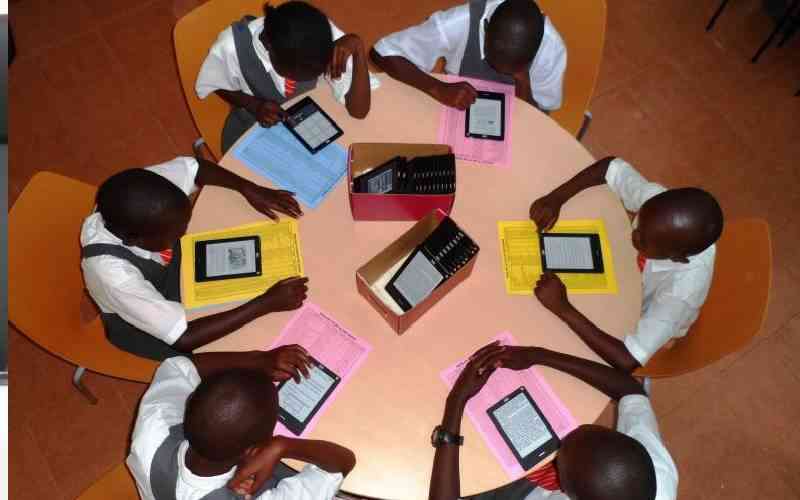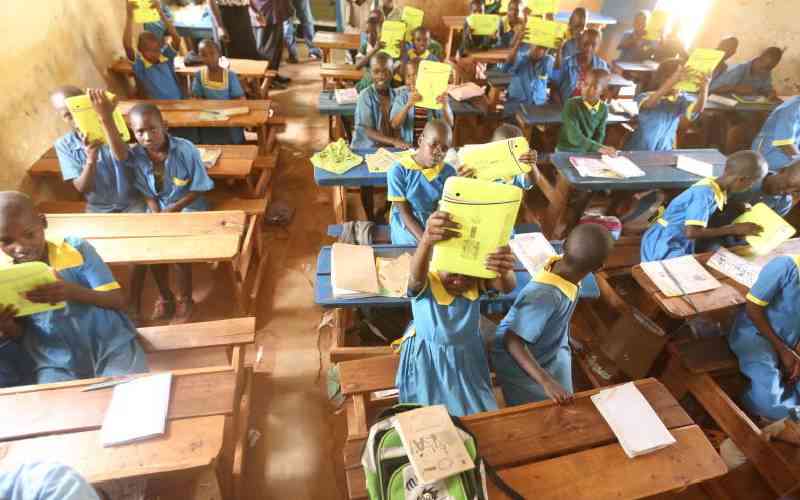Digital technology can help reinvent basic education, hence the need to embrace it and make it affordable. Kenya has made significant strides towards universal access to basic education. But the journey towards this objective remains murky with a host of challenges. The fresh curriculum expected to kick off next year across all primary schools coupled with ongoing reforms in the education sector, are aimed at having every Kenyan engaged and empowered through requisite skills and technologies. Teachers have to be equipped to deliver the new curriculum. In many occasions, teachers spend a lot of time preparing lessons plans which do not necessarily align to the pupils’ needs but to meet the government requirement.
More attention needs to be paid on the delivery of the developed content to ensure it achieves desired results. This reality could be realised by taking advantage of available technologies. Technology has a huge potential to reach those excluded from education systems. The support of teachers through provision of necessary infrastructure to deliver on the mandate remains key if universal access to basic education is to be realised. It is a challenge that Bridge International Academies has embraced leveraging on technology to make learning easier for its pupils. The concept ensures that content prepared by master teachers is on each and every teacher’s computer as guides to help prepare and deliver the lessons. The technology also acts as a tool of time and class management which enhances efficiency and improves learning. Bridge’s model is based on one goal – to support teachers in delivering a world-class education to our pupils every day. Ours is an endeavour to ensure that every child walks to school every morning, finds her teacher fully prepared, settles at a welcoming class and learns at an environment that is supportive of her quest to become the 21st Century woman we know she can be!
We do this by using technology and human capacity to bring the world’s best educationists into every Bridge classroom. Each one of our teachers is equipped with a teacher computer, where they upload daily teachers’ guides using the academy manager’s Smartphone’s wireless hotspot.
These teachers’ guides are developed by Bridge’s academic team, recruited from the world’s leading educational institutions to develop lesson plans that best teach Kenya’s 8-4-4 curriculum. Our system not only makes sure that every teacher is fully prepared for class but also gives the teacher more time to work individually with students.
This method of instruction is proven to improve learning outcomes and as such has been adopted in schools across Kenya. USAID is currently administering two scripted instruction programmes in classrooms across Kenya – Primary Math and Reading Initiative and the Tusome Early Grade Reading Activity. The Global Partnership for Education is also working with the Government of Kenya on a scripted mathematics programme in Kenyan government primary schools. Each person at Bridge, from the academic team, to manager, to teacher has a role in ensuring that our pupils are in class and learning. Kenya can have great teachers if right policies and mechanisms of supporting the same are put in place. This can be achieved by leveraging on ICT to resolve most of the education challenges especially in teacher monitoring/evaluation and lesson delivery.
- The writer works in the Education sector
 The Standard Group Plc is a
multi-media organization with investments in media platforms spanning newspaper
print operations, television, radio broadcasting, digital and online services. The
Standard Group is recognized as a leading multi-media house in Kenya with a key
influence in matters of national and international interest.
The Standard Group Plc is a
multi-media organization with investments in media platforms spanning newspaper
print operations, television, radio broadcasting, digital and online services. The
Standard Group is recognized as a leading multi-media house in Kenya with a key
influence in matters of national and international interest.
 The Standard Group Plc is a
multi-media organization with investments in media platforms spanning newspaper
print operations, television, radio broadcasting, digital and online services. The
Standard Group is recognized as a leading multi-media house in Kenya with a key
influence in matters of national and international interest.
The Standard Group Plc is a
multi-media organization with investments in media platforms spanning newspaper
print operations, television, radio broadcasting, digital and online services. The
Standard Group is recognized as a leading multi-media house in Kenya with a key
influence in matters of national and international interest.









